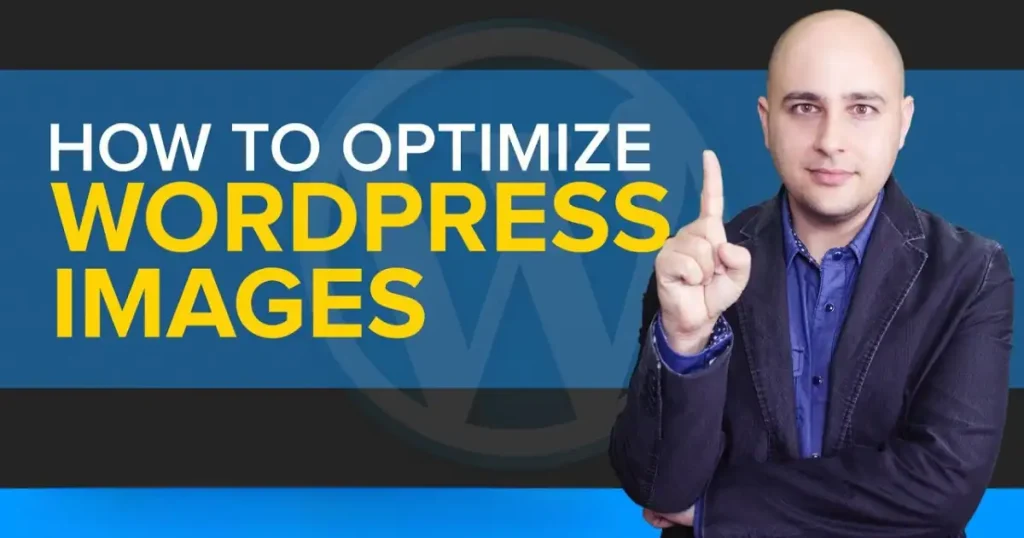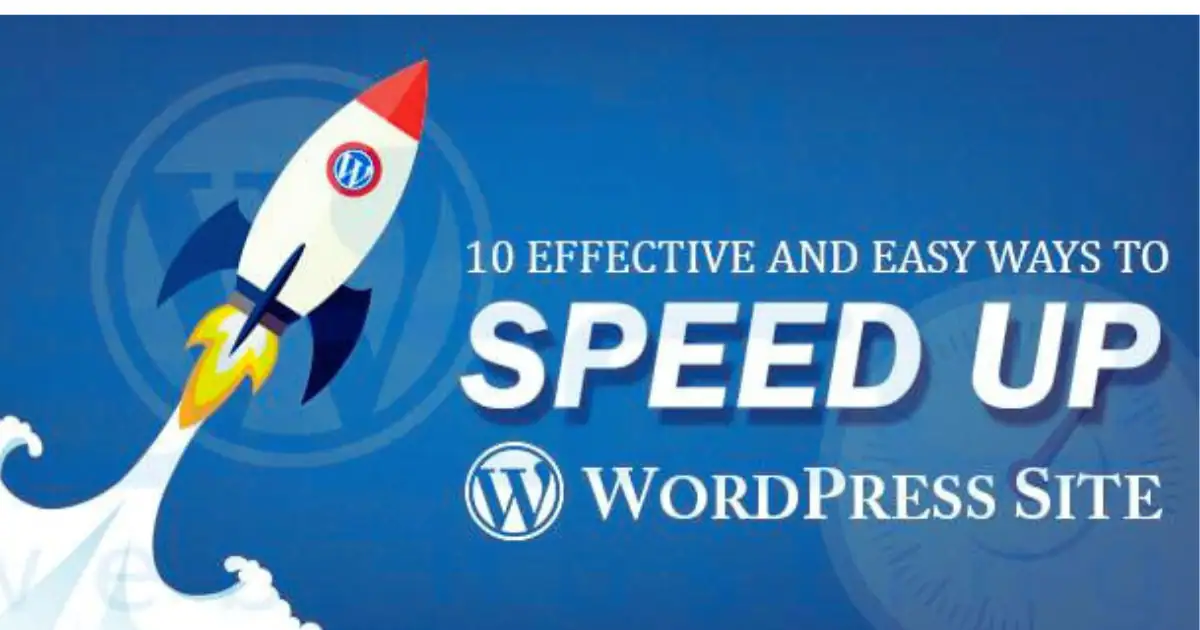A fast and optimized WordPress website is crucial to attracting visitors, improving user experience, and achieving online success. In today’s world, where online competition is increasing and search engine rankings are becoming more critical, website owners must prioritize performance optimization to stay ahead. This guide covers ten essential strategies to optimize and accelerate WordPress websites. From performance and server-level optimization to content delivery network (CDN) integration and SEO optimization, these techniques can help website owners keep their WordPress websites competitive, responsive, and resilient in the ever-evolving digital ecosystem.
Table of Contents
Maximizing Your WordPress Potential
It’s not enough to just follow a list to make your WordPress site run better; you need to understand how each optimization method helps your site do well. If you dig deeper into the above strategies, you can find more tips and tricks that will help you take your website to the next level.
Performance Optimization Insights:
- Do more than just adding caching and optimizing images; learn about the finer points of speed optimization. To make things seem faster, try using advanced methods like scripts that load progressively, images and videos that load slowly, and prioritizing displaying content above the fold.
Database and Code Refinement:
- Getting rid of unnecessary data and making PHP code run faster are important steps, but you might also want to use database indexing methods to run queries faster. Use profiling tools to find and fix speed problems in your codebase. This will help you make better use of resources and make your website run more smoothly.
Server-Level Fine-Tuning:
- Don’t just choose a hosting service; also look into how to make the server configuration work better. You could try server-side caching with Redis or Memcached, fine-tuning PHP settings for best speed, and adding HTTP/3 support to make the protocol work better.
User Experience Innovation:
- In addition to making sure your site works well on mobile devices and loads quickly, learn more about user-centered design. Use usability testing to find places on your website where people are having trouble navigating it, and think about adding interactive features like chatbots or custom content suggestions to get people more involved.
Security Measures and Proactive Monitoring:
- Basic security measures like regular updates and SSL/TLS encryption are important, but for more advanced danger protection, you might want to use web application firewalls (WAFs) and intrusion prevention systems (IPS). Invest in tools that do constant monitoring to find and fix security problems as they happen, protecting your website’s integrity and user data.
Performance Optimization Techniques
To ensure your WordPress website runs smoothly, you must implement caching mechanisms. This means using plugins or server-level caching to store frequently accessed data for faster retrieval. To speed up load times, you should also minimize and combine CSS/JS files so that fewer HTTP requests need to be made. Additionally, optimizing images for the web by compressing them without sacrificing quality improves page load speed.
Minifying and Combining CSS/JS Files:
Combining and minimizing CSS/JS files can help web pages load faster. This is because it reduces the number of HTTP requests to load the page. Removing unnecessary spaces, comments, and line breaks from code files makes the files smaller and quicker to load. This optimization technique can improve the loading speed of web pages.
Optimizing Images for the Web:

Optimizing images means making them smaller without reducing their quality. This can be done by compressing them and using the correct format, like WebP. When you do this, your webpage will load faster and be more user-friendly. To make your website even more quickly, you can only load the images that will be seen on the screen first and then load the others later.
Database and Code Optimization
Optimizing your WordPress database is essential for faster website performance. To achieve this, you must regularly clean up unnecessary data, such as post revisions, spam comments, and transient options. It helps to reduce database bloat and improve website loading times. Besides, optimizing WordPress database tables enhances efficient data storage and retrieval. To optimize PHP code for quicker execution, you should identify and optimize resource-intensive queries, reduce server load, and boost website speed.
Optimizing WordPress Database Tables:
Optimizing your WordPress database tables can improve the speed and efficiency of your website. You can use plugins like WP-DB Manager or WP-Optimize to analyze and optimize your database tables. This can lead to faster loading times and reduce the workload on your server. By optimizing the structure and indexing of your database tables, you can improve data retrieval and reduce query execution time.
Optimizing PHP Code for Faster Execution:
To make PHP code run faster and improve website performance, we need to optimize it. This involves finding and enhancing parts of the code that use many resources, like loops or database queries. We can do this by using techniques such as code refactoring, query optimization, and adding caching mechanisms.
Server-Level Optimization
Choosing a dependable hosting provider with optimized servers is vital to ensure the performance and reliability of your WordPress website. A dedicated or virtual private server (VPS) provides better performance and scalability than shared hosting. To increase website speed, server caching, and compression can be configured to reduce server response times and optimize data transfer.
HTTP/2 protocol support can expedite multiple assets’ loading simultaneously, thereby improving website performance. Implementing server-level security measures such as firewalls and intrusion detection systems to safeguard your website against attacks and downtime is essential.
Configuring Server Caching and Compression:
Website speed and performance can be significantly improved using server caching and compression techniques like opcode and GZIP compression. These techniques work by caching frequently accessed data and compressing files before sending them to clients. As a result, server response times are reduced, leading to faster page load times.
Enabling HTTP/2 Protocol Support:
To speed up the loading of website elements like images, JavaScript, and CSS, we can enable support for the HTTP/2 protocol. This technology allows us to combine multiple requests into a single connection, reducing the time it takes for your website to appear on the screen. This is especially beneficial for users with high-speed internet connections since it decreases the waiting time, resulting in better website performance.
Content Optimization Strategies
High-quality and optimized content is essential for improving the performance and visibility of your WordPress website. A lightweight theme with clean code is vital to achieve this, ensuring fast loading times and a better user experience. You can also optimize meta tags and headings for SEO to help search engines understand the relevance of your content, which can improve organic search rankings.
Optimizing Meta Tags and Headings for SEO:
Optimizing meta tags like title tags, meta descriptions, and heading tags can improve your website’s visibility in search engine results pages (SERPs). This can be done using relevant keywords and engaging language to attract clicks and improve organic search rankings. It’s essential to ensure that the meta tags accurately reflect the content of each page to enhance user experience and SEO performance.
Implementing Schema Markup:
Search engines can better understand your website’s content and relevance when you use schema markup such as JSON-LD or microdata. This can produce more informative search results, including star ratings, reviews, and event information. Using schema markup can increase the visibility of your content in search engine results, making it more relevant and appealing to potential users.
User Experience Enhancement

Improving user experience (UX) is essential for keeping visitors on your WordPress website and encouraging engagement. To achieve this, you should enhance website navigation so that users can easily find the information they need, which can reduce bounce rates and improve user satisfaction. Additionally, you can ensure a smoother browsing experience by optimizing page load times through various techniques, such as image optimization and server-side caching. Also, it is essential to ensure your website is mobile-friendly and responsive to adapt seamlessly to different devices and screen sizes, catering to a diverse audience.
Enhancing Page Load Times:
To make browsing smoother and reduce user frustration, it’s essential to improve page load times using various optimization techniques, such as image optimization, server-side caching, and code minification. Regularly monitor website performance and identify areas for improvement to ensure optimal page load times on all devices and browsers.
Ensuring Mobile Responsiveness:

As more people use mobile devices to browse websites, making sure your website is easy to use on different screen sizes is essential. You can use responsive design principles to ensure your website works well on mobile devices. This means that your website’s layout and content will automatically adjust to fit the size of the screen.
Security Measures and Performance
Keeping your website secure is essential to protect sensitive data and maintain trust with your visitors. You can do this by ensuring that all WordPress core, themes, and plugins are up-to-date, which will patch any known vulnerabilities and reduce the risk of security breaches. You can also use SSL/TLS encryption to safeguard data transmitted between the user’s browser and your website, preventing anyone from intercepting or tampering with it.
Implementing SSL/TLS Encryption:
To keep your website’s sensitive information secure, use SSL/TLS encryption. It protects data transmitted between users and your website, like login credentials, payment details, and personal data. You can get an SSL/TLS certificate from a trusted authority and set up HTTPS to ensure safe communication.
Installing Security Plugins and Firewalls:
If you want to protect your website from malicious attacks and unauthorized access, consider installing security plugins and firewalls. Look for plugins that offer features like malware scanning, intrusion detection, and login protection. Configuring firewall rules to block suspicious traffic and prevent standard attack methods, such as SQL injection and cross-site scripting (XSS), is also important. Keep your security plugins up to date and stay aware of security alerts to stay ahead of emerging threats.
SEO Optimization Techniques

To improve your WordPress website’s visibility and ranking on search engine results pages (SERPs), it’s essential to use effective search engine optimization (SEO) techniques. Search algorithms prefer faster-loading websites, so optimizing website speed and performance is critical. Using SEO-friendly URLs and permalinks helps search engines understand the importance of your content and improves indexing. Creating an XML sitemap and submitting it to search engines ensures that your website’s pages are discovered and indexed efficiently. Optimizing images with descriptive alt tags improves accessibility and makes your content more relevant for image search.
Using SEO-Friendly URLs and Permalinks:
When creating URLs and permalinks for your website, it’s important to consider search engine visibility and user understanding. To improve both, choose descriptive and relevant URLs that include target keywords. Avoid using generic or cryptic URLs. In WordPress, configure permalink settings to reflect the hierarchy and organization of your website’s content. This will make it easier for users to navigate and understand what your website is about.
Creating an XML Sitemap and Submitting it to Search Engines:
You can create an XML sitemap to help search engines find and index all pages on your website more efficiently. This can improve your website’s visibility on search engines. You can use plugins like Yoast SEO or Rank Math to generate XML sitemaps automatically. These plugins will ensure that all relevant pages and content types are included in the sitemap.
Content Delivery Network (CDN) Integration
Integrating a Content Delivery Network (CDN) into your WordPress website can improve its performance and reliability. With a CDN, your website resources are distributed across multiple servers worldwide, reducing latency and ensuring faster loading times for users, regardless of their location. By configuring CDN settings, you can optimize content delivery and caching, which improves website speed and reduces server load. You can also cache static content on CDN servers to enhance efficiency and scalability. This provides a seamless browsing experience for visitors.
Configuring CDN Settings:
It’s essential to configure your CDN settings properly. This means adjusting caching rules, compression settings, and cache expiration times to ensure efficient content delivery and minimize user latency. By doing so, you can optimize content delivery and caching, which can help your website run faster and more reliably.
Caching Static Content on CDN Servers:
Consider caching static content like images, CSS, and JavaScript files on CDN servers to make your website faster and more efficient. This will reduce server load times and enhance scalability. By configuring CDN caching settings, you can cache static content at edge locations worldwide, ensuring faster content delivery to your users.
Utilizing CDN Analytics:
Using CDN analytics can help you improve your website’s performance. By tracking metrics like how much data is being transferred, how often visitors are getting data from the CDN, and how quickly data is being delivered, you can find ways to make your website faster and more reliable. You can use dashboards and reports to understand better how people use your website and make changes to improve their experience.
Browser and Server Caching
Making websites load faster is essential to provide a good user experience. One way to achieve this is by using caching techniques. Caching is like temporarily storing information to speed up website loading. There are two types of caching: browser caching and server caching.
Implementing Browser Caching:
When you configure browser caching, you can store static resources on your visitors’ web browsers. This makes it faster for them to load your website when they return. You can control how long those resources are saved and ensure that different browsers behave optimally by setting caching headers and expiration times.
Configuring Server-Side Caching:
If you have a website that gets a lot of visitors, you can make it faster by using caching. This means that you store information in a certain way, making it easier for people to see your website quickly. There are special tools and ways to set this up, and it can help your website run smoothly and promptly, even if many people are trying to visit it simultaneously.
Website Monitoring and Optimization Tools

Website owners can improve their WordPress performance by monitoring and optimizing tools. These tools provide insights into website speed, uptime, and resource usage. They can help identify areas that need improvement and optimize website performance. Website auditing tools allow website owners to analyze website components, such as code quality, page structure, and SEO optimization. This helps identify potential issues and opportunities for optimization.
Performance Monitoring Tools:
Website performance monitoring tools help you track your website’s speed, uptime, and resource usage. By using tools like Google PageSpeed Insights, Pingdom, or GTmetrix, you can get insights into the performance of your website and identify areas that need improvement. Optimizing website components based on these insights can improve user experience.
Website Auditing Tools:
Website auditing tools analyze website components like code quality, page structure, and SEO optimization. The tools identify potential issues and opportunities for optimization. Regular website audits with SEMrush, Moz, or Screaming Frog can identify technical SEO issues, broken links, and performance bottlenecks. After identifying these issues, the recommended optimizations can be implemented to improve website performance and search engine visibility.
Conclusion
Optimizing your WordPress website is crucial for providing a great user experience, improving search engine visibility, and increasing conversions. You can enhance website speed, reliability, and security by using performance optimization techniques, database and code optimization, server-level optimization, and content optimization strategies. To further improve your website, you can integrate a Content Delivery Network (CDN), use browser and server caching, and implement website monitoring and optimization tools.
These tools can help you identify performance bottlenecks and optimize your website effectively. Prioritizing user experience, security, and search engine optimization is essential to keep your WordPress website competitive and responsive to your audience.
Frequently Asked Questions (FAQ’s)
Q: How can I improve my website’s loading speed?
A: Improving your website’s loading speed can be done in practical ways. Here are some tips: optimize your images, enable caching, minimize CSS/JS files, use a content delivery network (CDN), and choose a reliable hosting provider.
Q: Is it necessary to update WordPress themes and plugins regularly?
A: Updating WordPress core, themes, and plugins is essential for security, performance, and compatibility with new technologies and standards. Keeping your website up to date is crucial to ensure it runs smoothly and securely. Updating WordPress core, themes, and plugins is vital for security, performance, and compatibility with the latest technologies and standards.
Q: What should I do if my website experiences downtime or slow performance?
A: One way to identify issues with your website’s performance and uptime is using tools like uptime monitors and performance testing tools. Troubleshooting plugins, optimizing server resources, and consulting with your hosting provider are other ways to address performance issues.
Q: How can I optimize my website for mobile devices?
A: To ensure that websites are optimized for mobile devices, it’s crucial to implement responsive design principles, optimize images and media for mobile viewing, and prioritize mobile-friendly user interface elements. This means ensuring that the website is easy to use on smaller screens and that the design and layout adjust to fit different devices.
Q: How can I improve my website’s search engine ranking?
A: You can follow a few practical strategies to improve your website’s rankings on search engines. These include optimizing your content for relevant keywords, building high-quality backlinks, improving your website’s speed and user experience, and regularly publishing fresh and engaging content.



